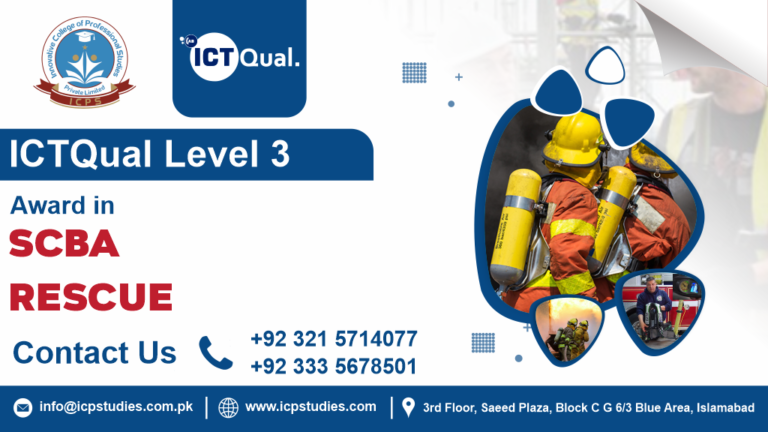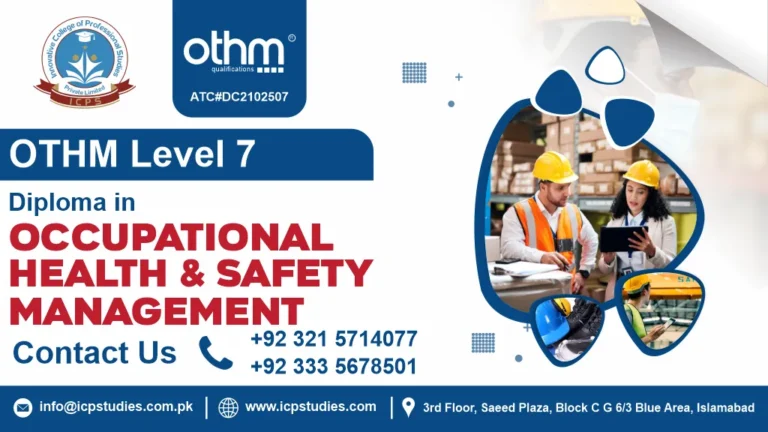In the ever-evolving world of construction, ensuring the safety of scaffolding is crucial for both the well-being of workers and the success of a project. The Level 3 Award in Scaffolding Safety is designed to elevate the standards of scaffolding practices, equipping professionals with the advanced skills and knowledge required to manage and oversee scaffolding safety effectively.
The Level 3 Award in Scaffolding Safety is a prestigious qualification aimed at professionals who are responsible for scaffolding safety on construction sites. This award is particularly suited for experienced scaffolders, site managers, health and safety officers, and anyone in a supervisory role. It focuses on advanced knowledge and skills needed to ensure that scaffolding structures are safe, compliant with regulations, and capable of supporting the necessary loads.
The Level 3 Award in Scaffolding Safety is more than just a qualification; it’s a commitment to maintaining high standards of safety and professionalism in the construction industry. By investing in this award, you’re not only enhancing your own skills but also contributing to a safer and more efficient working environment. Whether you’re looking to advance your career or ensure the highest safety standards on your projects, this qualification is a vital step toward achieving excellence in scaffolding safety.
All About ICTQual Level 3 Award in Scaffolding Safety
Course Overview
The Level 3 Award in Scaffolding Safety is a specialized qualification designed for professionals in the construction industry who are responsible for ensuring the safety and compliance of scaffolding systems. This advanced certification focuses on providing the knowledge and skills necessary to effectively manage and inspect scaffolding structures, adhering to safety standards and regulations.
Level 3 Award in Scaffolding Safety is a vital qualification for those looking to excel in the field of scaffolding. It ensures that professionals are equipped with the advanced skills and knowledge needed to manage scaffolding safety effectively, contributing to both personal career development and the overall safety of construction projects.
Study Units
- Introduction to Scaffolding Safety
- Types of Scaffolding Systems
- Scaffolding Materials and Construction
- Scaffolding Inspection and Maintenance
- Risk Assessment and Hazard Control
- Safety Equipment and Personal Protective Gear
- Emergency Response and Rescue Procedures
To enroll in the ICTQual Level 3 Award in Scaffolding Safety, participants typically need to meet the following requirements:
- Age Requirement: Participants should be at least 18 years old.
- Basic Literacy and Numeracy: A good understanding of English, along with basic literacy and numeracy skills, is essential for completing the course.
- Relevant Experience: Prior experience in construction or scaffolding operations is beneficial.
- Knowledge of Health and Safety Regulations: Familiarity with health and safety standards related to scaffolding is advantageous.
- Course Registration: Participants must register for the course through an accredited training provider.
- Payment: Course fees must be paid as required by the training provider.
- Commitment to Attend: Participants should be prepared to attend the full duration of the course and complete any required assessments to receive certification.
The ICTQual Level 3 Award in Scaffolding Safety is designed for:
- Scaffolders: Individuals who work directly in scaffolding, seeking to enhance their safety knowledge and practices.
- Construction Workers: Those involved in construction projects who need to understand scaffolding safety protocols.
- Site Supervisors and Managers: Individuals responsible for overseeing scaffolding operations and ensuring compliance with safety regulations.
- Health and Safety Officers: Professionals focused on implementing and monitoring safety standards related to scaffolding.
- Training Instructors: Those involved in training others in scaffolding practices and safety measures.
- Anyone Involved in Project Management: Individuals managing construction projects where scaffolding plays a critical role in safety and operations.
This course equips participants with essential knowledge and skills to ensure safe scaffolding practices, contributing to a safer work environment in construction and related industries.
Learning Outcome
Introduction to Scaffolding Safety
Learning Outcomes:
- Understand Safety Regulations: Demonstrate knowledge of relevant safety regulations, standards, and guidelines related to scaffolding.
- Identify Responsibilities: Recognize the roles and responsibilities of different personnel involved in scaffolding safety, including scaffolders, supervisors, and safety officers.
- Principles of Safety: Explain the fundamental principles of scaffolding safety and how they apply to everyday practices on site.
- Safety Culture: Understand the importance of fostering a safety culture within a scaffolding team and promoting safety awareness among all site personnel.
2. Types of Scaffolding Systems
Learning Outcomes:
- Identify Scaffolding Types: Differentiate between various types of scaffolding systems, including tube and fitting, system scaffolding, and suspended scaffolding.
- Understand Applications: Explain the typical applications and suitability of different scaffolding systems for various construction projects.
- System Components: Describe the main components and structural elements of each scaffolding type and their functions.
- Select Appropriate Scaffolding: Choose the appropriate scaffolding system based on project requirements, load-bearing capacities, and environmental conditions.
3. Scaffolding Materials and Construction
Learning Outcomes:
- Material Properties: Understand the properties and specifications of common scaffolding materials, such as steel, aluminum, and timber.
- Construction Techniques: Explain proper construction techniques and methods for assembling and erecting scaffolding systems.
- Material Handling: Demonstrate knowledge of safe handling, storage, and maintenance of scaffolding materials to prevent damage and ensure safety.
- Quality Standards: Identify quality standards and inspection criteria for scaffolding materials and construction to ensure compliance with safety regulations.
4. Scaffolding Inspection and Maintenance
Learning Outcomes:
- Inspection Procedures: Describe the procedures and criteria for inspecting scaffolding systems to ensure they are safe and compliant with regulations.
- Identify Defects: Recognize common defects and issues in scaffolding structures, such as missing components, wear and tear, and structural weaknesses.
- Maintenance Practices: Explain routine maintenance practices and how to address and rectify identified defects or safety issues.
- Documentation: Maintain accurate records of inspections, maintenance activities, and corrective actions taken.
5. Risk Assessment and Hazard Control
Learning Outcomes:
- Conduct Risk Assessments: Perform comprehensive risk assessments for scaffolding operations, identifying potential hazards and their impact.
- Implement Controls: Develop and implement effective hazard control measures and safety procedures to mitigate identified risks.
- Evaluate Risk Controls: Assess the effectiveness of implemented controls and make adjustments as necessary to improve safety.
- Emergency Preparedness: Understand the importance of having contingency plans and emergency procedures in place to address unexpected incidents.
6. Safety Equipment and Personal Protective Gear
Learning Outcomes:
- Understand Safety Equipment: Identify various types of safety equipment and personal protective gear used in scaffolding operations, including helmets, harnesses, and gloves.
- Proper Use: Explain the correct use and maintenance of safety equipment to ensure maximum protection for workers.
- Selection Criteria: Choose appropriate personal protective gear based on the specific risks and requirements of the scaffolding task.
- Compliance: Ensure that all safety equipment and protective gear comply with relevant safety standards and regulations.
7. Emergency Response and Rescue Procedures
Learning Outcomes:
- Emergency Procedures: Understand and implement emergency response procedures for scaffolding-related incidents, including falls, structural failures, and other emergencies.
- Rescue Techniques: Demonstrate knowledge of effective rescue techniques and equipment to safely recover individuals from scaffolding accidents.
- Communication: Establish clear communication channels and protocols for coordinating emergency responses and ensuring swift action during incidents.
- First Aid: Recognize the importance of first aid training and its role in responding to scaffolding emergencies.
FAQs about ICTQual Level 3 Award in Scaffolding Safety







